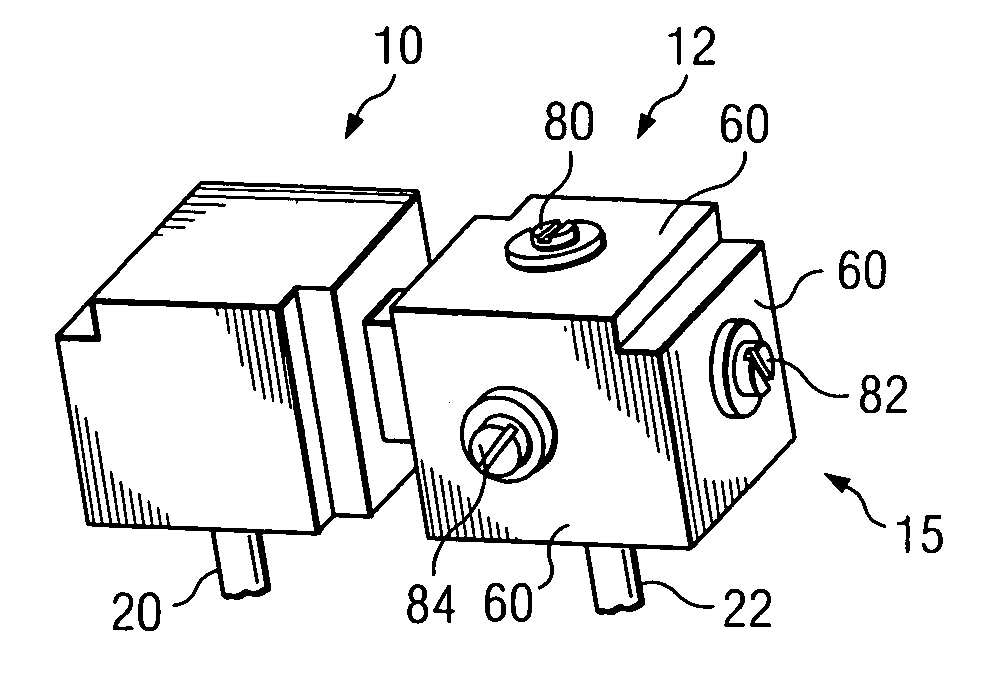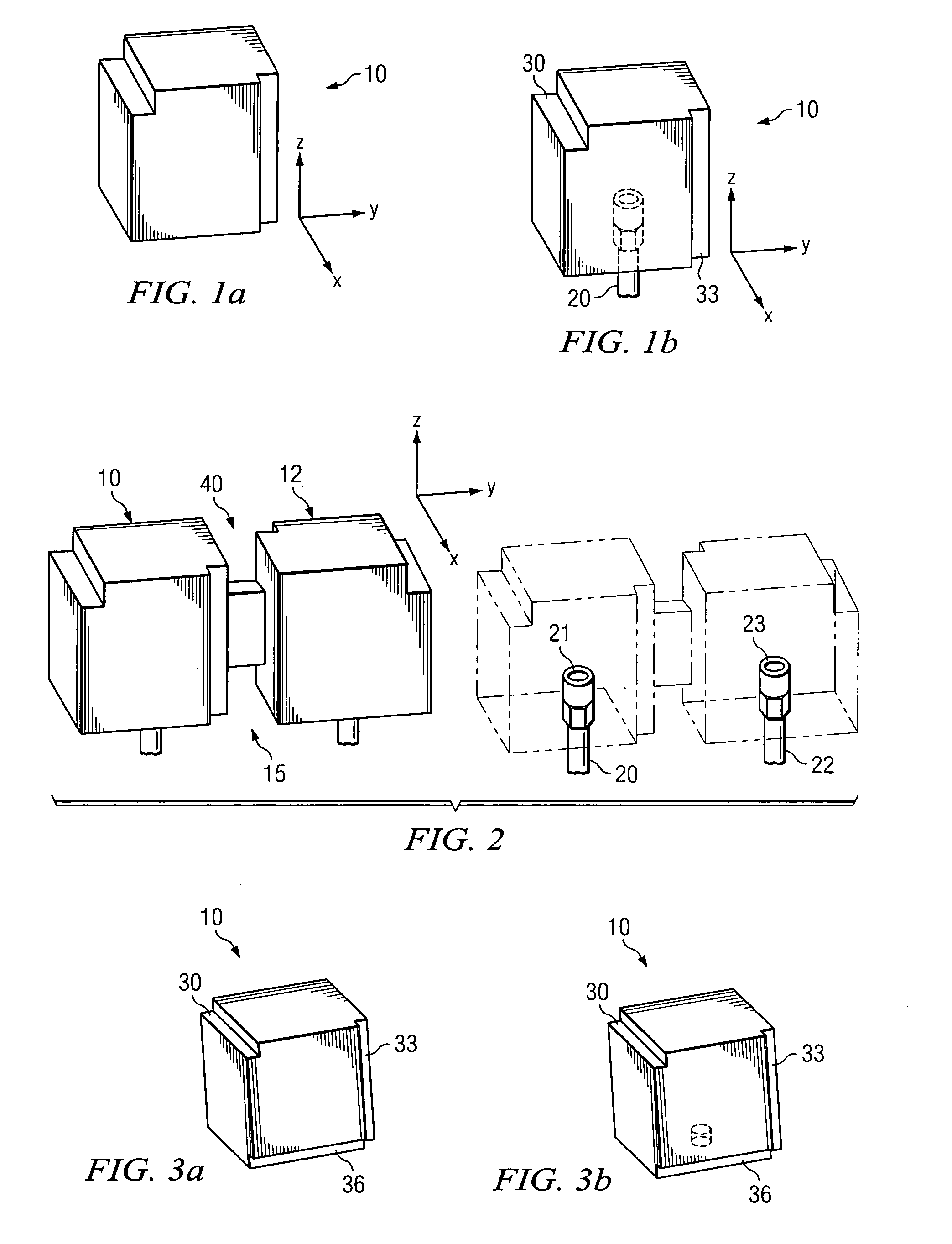Dielectric mono-block triple-mode microwave delay filter
a microwave delay filter and dielectric monoblock technology, applied in the direction of waveguide type devices, resonators, basic electric elements, etc., can solve the problems of large cost percentage of the entire filter assembly, the inability to reduce the size of the metal housing beyond, and the current size and cost of the metal filter too large and expensiv
- Summary
- Abstract
- Description
- Claims
- Application Information
AI Technical Summary
Benefits of technology
Problems solved by technology
Method used
Image
Examples
second embodiment
[0062]In a second embodiment, the circuit board supporting the filter assembly 110 is an integral part of the circuit board that is formed by other parts of the transmit and / or receive system, such as the antenna, amplifier, or analog to digital converter. As an example, FIG. 13 shows the filter assembly 110 on the same board as a 4-element microstrip-patch antenna array 150. The mono-block filter 10, 12 and combline (or premask) filter 120 are mounted to the same board that supports a 4-element antenna array 150. The mono-block 10 and mask filters 120 are on one side of the circuit board. The low pass filter 130 and the antenna 150 are on the opposite side. A housing could be included, as needed.
third embodiment
[0063]In a third embodiment, the filter assembly 110 is contained in a box and connectors are provided either as coaxial connectors or as pads that can be soldered to another circuit board in a standard soldering operation. FIG. 14 shows two examples of packages with pads 160. The filter package can include cooling fins if required. A package of the type shown in FIG. 14 may contain only the mono-block 10, 12, as shown, or it may contain a filter assembly 110 of the type shown in FIG. 13. FIG. 14(a) shows the mono-block filter 10, 12 packaged in a box with the internal features highlighted in FIG. 14(b). The pads 160 on the bottom of the box in FIG. 14(a) would be soldered to a circuit board. FIG. 14(c) shows a similar package for a duplexer consisting of two filters with one common port and, therefore, three connecting pads 160. A package of the type shown here may contain only the mono-block 10, 12 or it may contain a filter assembly 110.
[0064]Preselect or Mask Filter: Common to a...
PUM
 Login to View More
Login to View More Abstract
Description
Claims
Application Information
 Login to View More
Login to View More - R&D
- Intellectual Property
- Life Sciences
- Materials
- Tech Scout
- Unparalleled Data Quality
- Higher Quality Content
- 60% Fewer Hallucinations
Browse by: Latest US Patents, China's latest patents, Technical Efficacy Thesaurus, Application Domain, Technology Topic, Popular Technical Reports.
© 2025 PatSnap. All rights reserved.Legal|Privacy policy|Modern Slavery Act Transparency Statement|Sitemap|About US| Contact US: help@patsnap.com



